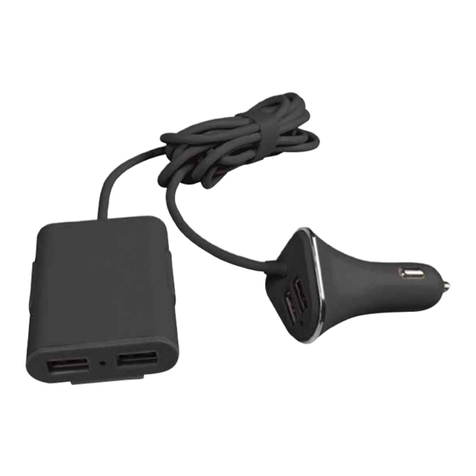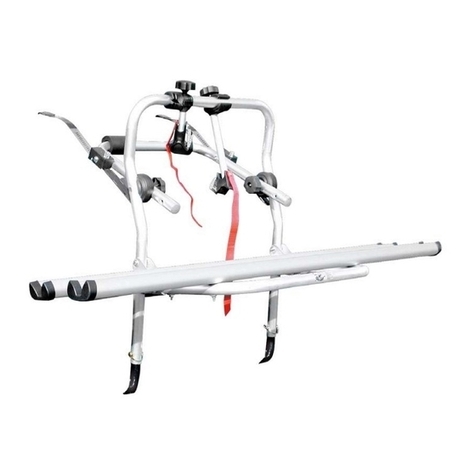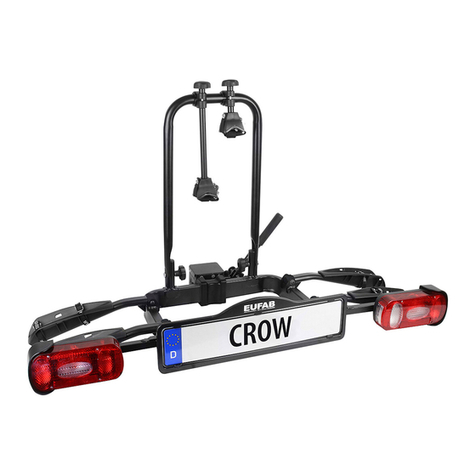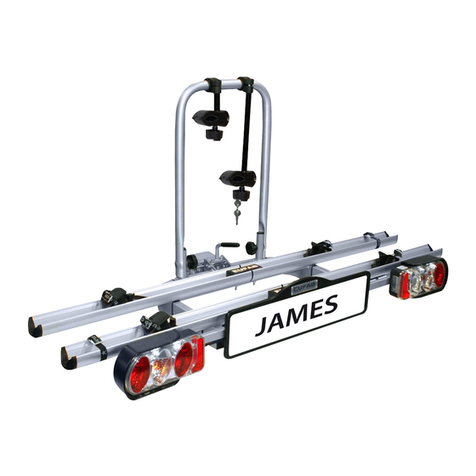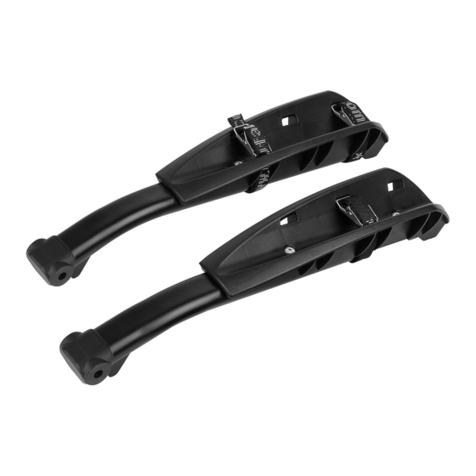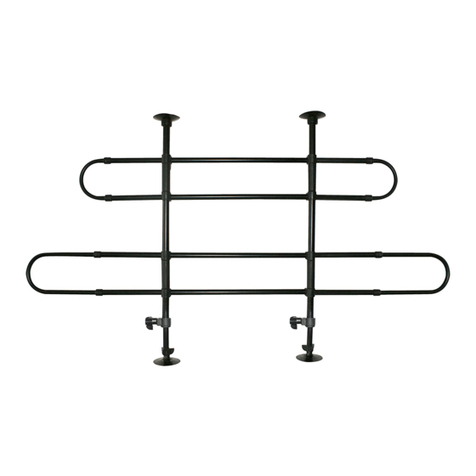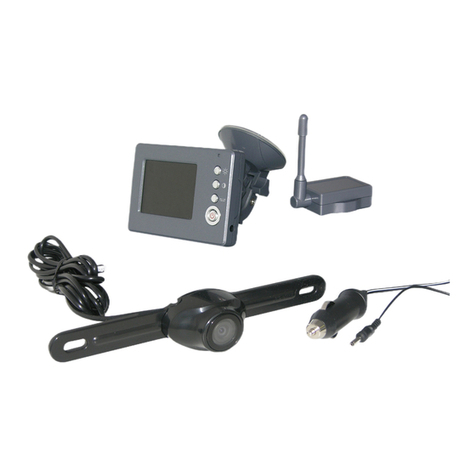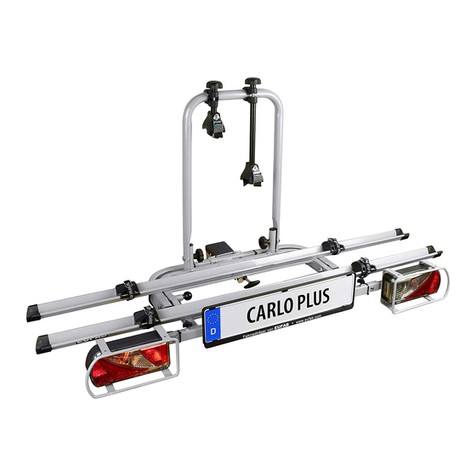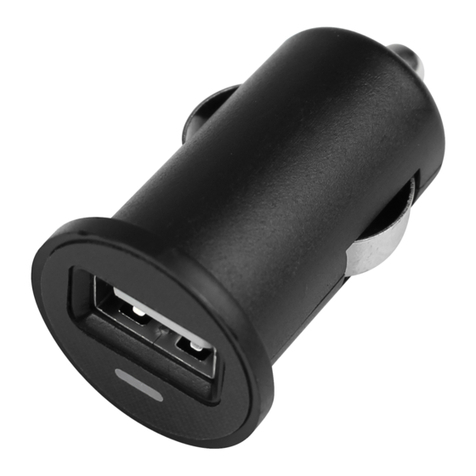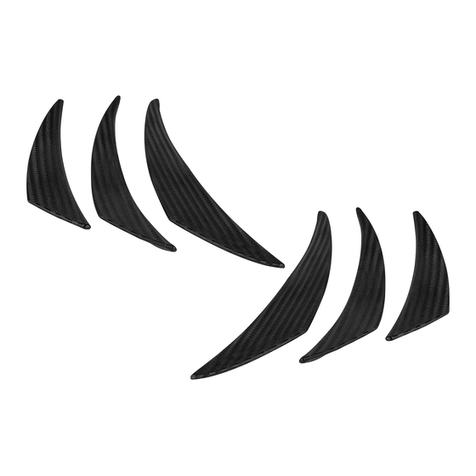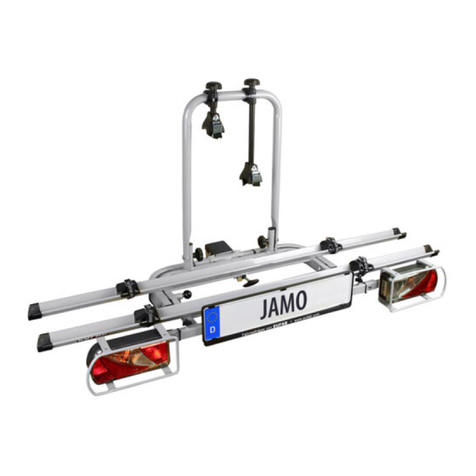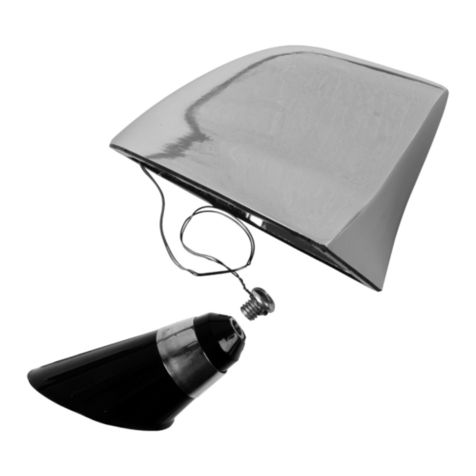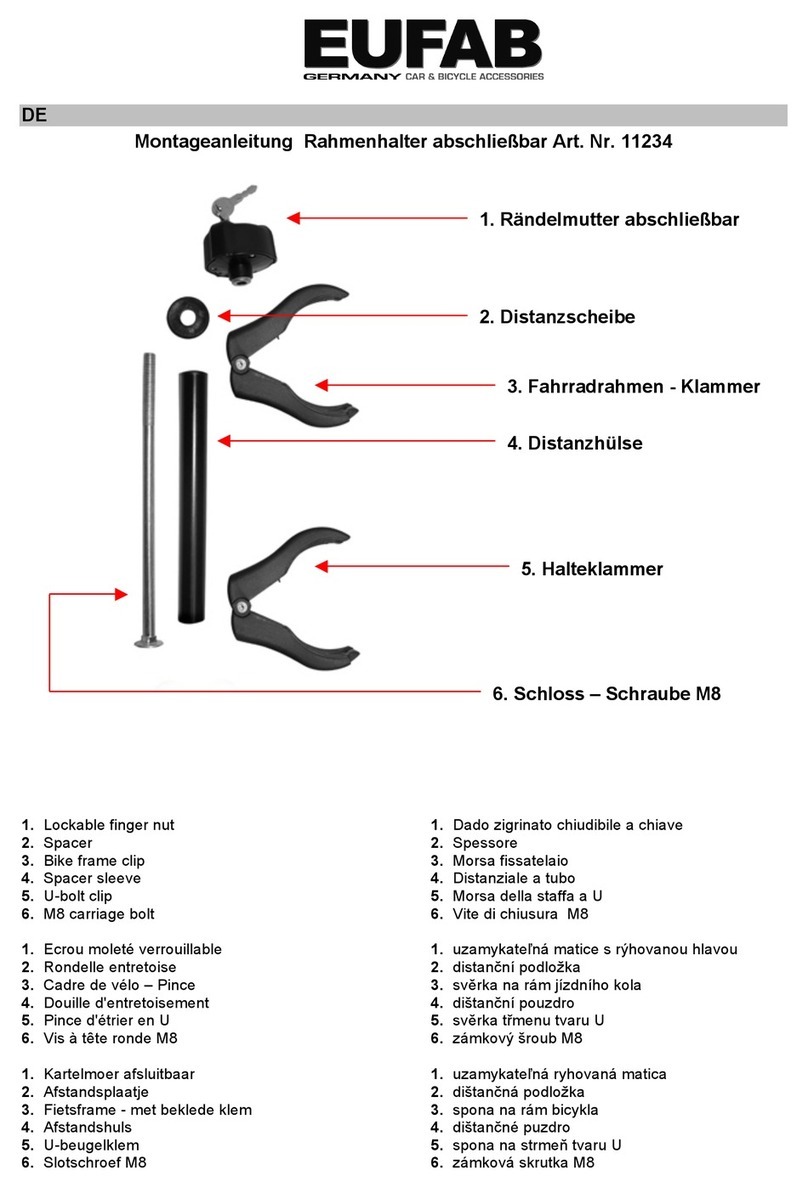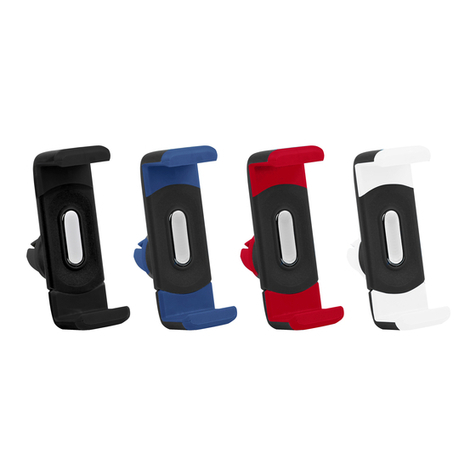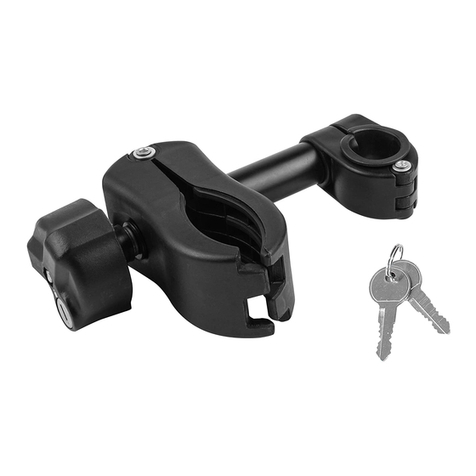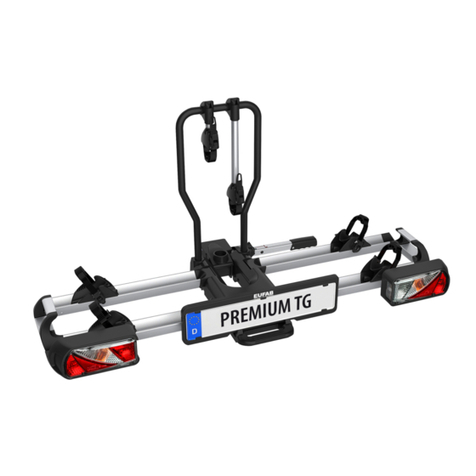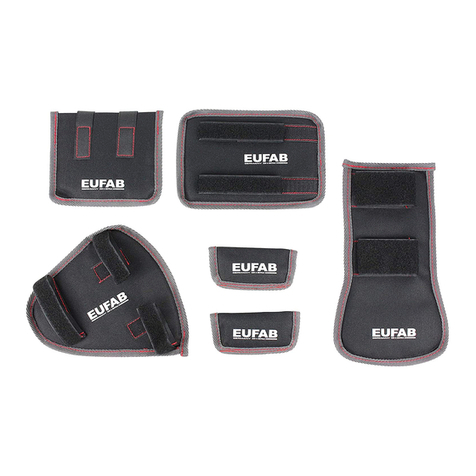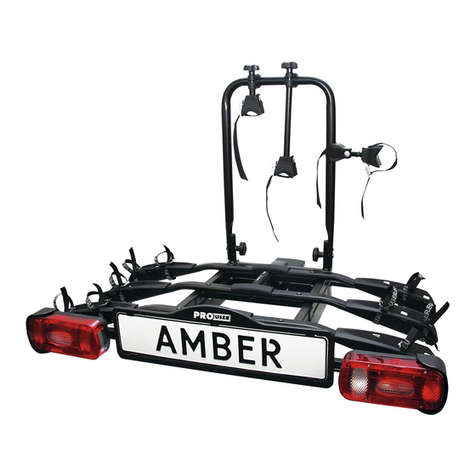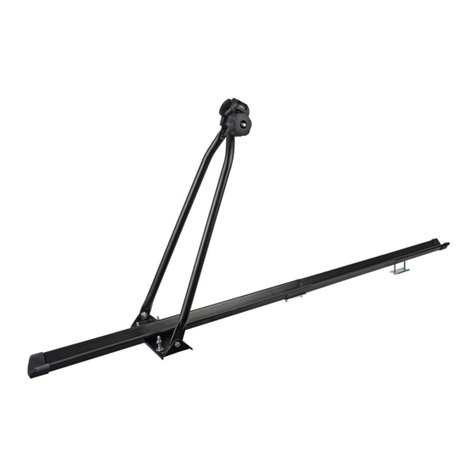
5
• Beachten Sie unbedingt die Angaben
zur max. Nutzlast, zulässigen Stützlast
und zulässigem Gesamtgewicht Ihres
Fahrzeugs. Überschreiten Sie diese
Angaben keinesfalls.
WARNUNG!
Personen- oder Sachschaden durch
Überladen.
Das Überschreiten der max. Nutzlast des
Fahrradträgers, sowie der zulässigen
Stützlast der Anhängerkupplung oder des
zulässigen Gesamtgewichts kann zu
schweren Unfällen führen.
• Demontieren Sie den Fahrradträger, wenn
Sie ihn nicht benötigen.
• Fahren Sie niemals mit zusammenge-
klapptem Fahrradträger.
WARNUNG!
Personen- oder Sachschaden durch
nicht komplett montierten Fahrrad-
träger.
Das Fahren mit zusammengeklapptem
Fahrradträger kann zu Unfällen führen.
Die beweglichen Teile des Fahrradträgers
stellen im nicht fertig montierten Zustand
eine Gefahrenquelle dar.
• Überprüfen Sie vor jedem Fahrtantritt
den korrekten und festen Sitz des Gurtes
um die Fahrräder und Rahmenhalter des
Trägers.
• Überprüfen Sie vor jedem Fahrtantritt den
korrekten und festen Sitz der beiden Gurte
um das Vorderrad und den Gurt um das
Hinterrad des Fahrrades.
• Spannen Sie die Gurte ggf. nach.
• Überprüfen Sie vor jedem Fahrtantritt, ob
die verwendeten Gurte unbeschädigt und
unverschlissen sind.
• Beschädigte oder verschlissene
Gurte müssen vor Fahrtantritt gegen
unbeschädigte Gurte ausgetauscht
werden. Es dürfen nur Gurte verwendet
werden, die von der EAL GmbH dafür
zugelassen sind.
WARNUNG!
Personen- oder Sachschaden durch
Verlieren der Fahrräder.
Das Fahren ohne Sicherheitsgurte kann zu
Unfällen führen.
• Montieren Sie nurTeile, die nicht über den
Rand des Fahrzeugs herausragen.
WARNUNG!
Personen- oder Sachschaden durch
überstehende Teile.
Über den Rand des Fahrzeugs bzw.
Fahrradträgers stehende Teile können
während der Fahrt Personen- oder Sach-
schäden verursachen.
• Benutzen Sie keine Planen.
WARNUNG!
Personen- oder Sachschaden durch
Abdeckplanen.
Abdeckplanen erhöhen den Luftwi-
derstand. Sie können sich lösen und
umheriegen, das kann zu schweren
Unfällen führen.
• Kontrollieren Sie die Befestigung des
Trägers auf sicheren Sitz nach einigen Ki-
lometern.
• Führen Sie die Montage bei lockerem Sitz
erneut durch. Eventuell muss der Schnell-
verschluss nachgestellt werden. Lesen
Sie dazu im entsprechenden Kapitel der
Bedienungsanleitung des Fahrradträgers
nach. Besteht kein fester Halt, darf der
Träger nicht verwendet werden.
WARNUNG!
Personen- oder Sachschaden durch
Verlieren des Fahrradträgers.
Der Träger setzt sich nach der Befestigung
und einigen gefahrenen Kilometern erst
richtig auf die Kupplung.
• Benutzen Sie den Fahrradträger nicht im
Gelände.
• Nur geeignet für den Einsatz auf einer
Pkw-Anhängerkupplung.
• Fahren Sie langsam über Bremsschwellen:
Max. Geschwindigkeit 10 km/h.
WARNUNG!
Personen- oder Sachschaden durch
Abbrechen des Fahrradträgers.
Das Fahren mit montiertem Fahrradträger
im Gelände kann zu Beschädigungen oder
zum Bruch desTrägers führen.
